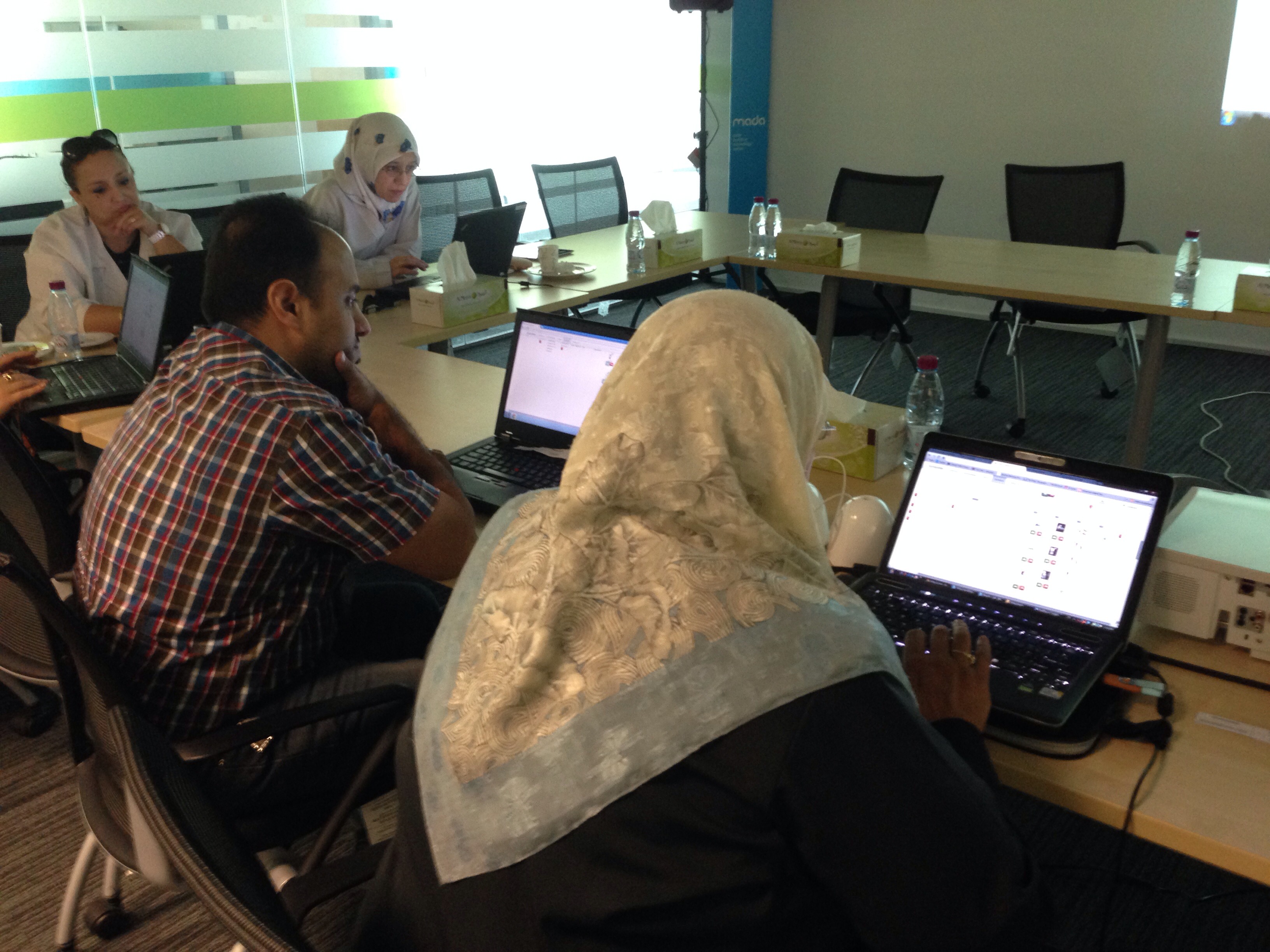At the outset of this Arabic Symbol Dictionary research there was a determination to ensure that the approach would be participatory in nature as mentioned in our blog dated December 13th, 2013 ‘A Participatory Approach to Research’. In that blog we outlined the type of participatory approach being taken where those supporting the project would be involved with all the planning and take part in the decision making. 
To this end a voting system was set up to allow AAC experts, users and those supporting users to provide feedback about the two freely available symbol sets compared to the PCS or Widgit ones already in use.
Members of the Advisory Group had separately mentioned that they did not want to see the development of yet another set of symbols and this seemed to be an eminently sensible plan if we were to also keep to the request in the early days of the AAC Forum meetings that the dictionary should be available in English and Arabic as many of those working with AAC users and caring for them spoke better English than Arabic.
The voting system allowed users to login in with an email address to not only vote positively or negatively for a symbol but to also select a series of check boxes to say why they liked or did not like it when shown a lexicon entry on one side of the screen and a selection of symbols on the right. The symbols they voted on where only from ARASAAC and Sclera symbols in order to compare to the ones they already knew – PCS or Widgit.
The statements that were provided were positive or negative based on the initial vote so a positive up vote would result in the following phrases being presented:
The negative vote would result with the same check boxes but each phrase had the addition of the word ‘not’.
There were 562 symbols that could take a vote each with the check boxes and free text comment. 33 individuals took part from the various centres in Doha. The outcome was interesting as both sets of freely available symbol sets presented issues for those voting with a wide variation in additional comments besides those offered with the check boxes.
 Both symbol sets had their compliments for clarity, meaningfulness and cultural sensitivity but when combined with the free textual comments it was the negative sentiments that were quite stark in their numbers. 777 check box comments were related to a lack of clarity in representing the word or multiword in English – the word lists used were based on those collected from English speaking therapists in Doha – the Arabic core vocabularies are to follow. 499 were related to the way the symbol was drawn, colour and contrast levels, 197 comments were checked as being culturally insensitive and 172 were not similar to PCS or Widgit. The ranking of this list follows the way voters wrote in the free text field. There were 130 additional comments about the meaning of the symbol and its representation of a word or phrase. There were comments about the way arrows and question marks represented actions or words, poor representations of important words such as ‘want’ with individuals varying in their views about text appearing in a speech bubble or near a symbol. Plurals also caused comments but it was the way the abstract items may be drawn that also caused concern. Overall there were 97 additional comments about the look of some symbols and some questioned how children would learn a shape or object. Distractable and busy drawings were described in 9 comments with facial expressions also being considered important.
Both symbol sets had their compliments for clarity, meaningfulness and cultural sensitivity but when combined with the free textual comments it was the negative sentiments that were quite stark in their numbers. 777 check box comments were related to a lack of clarity in representing the word or multiword in English – the word lists used were based on those collected from English speaking therapists in Doha – the Arabic core vocabularies are to follow. 499 were related to the way the symbol was drawn, colour and contrast levels, 197 comments were checked as being culturally insensitive and 172 were not similar to PCS or Widgit. The ranking of this list follows the way voters wrote in the free text field. There were 130 additional comments about the meaning of the symbol and its representation of a word or phrase. There were comments about the way arrows and question marks represented actions or words, poor representations of important words such as ‘want’ with individuals varying in their views about text appearing in a speech bubble or near a symbol. Plurals also caused comments but it was the way the abstract items may be drawn that also caused concern. Overall there were 97 additional comments about the look of some symbols and some questioned how children would learn a shape or object. Distractable and busy drawings were described in 9 comments with facial expressions also being considered important.
Additional cultural issues were raised in 41 free text comments with ‘thumbs up and down’ being noted as an issue along with dress, female/male requirements, language and using the pointed finger plus the use of a ‘halo’ for being good. Colour is an item that will really need discussion especially for those with visual impairments. The 28 additional mentions were usually around contrast levels. There were only 8 additional points that seemed to be related to the image not suiting the environment such as “In Qatar a rainy day is a good day”! The use of text with symbols is also a debatable subject and some pictograms were just deemed to be totally unsuitable whether in English or Arabic.
Overall the ARASAAC symbols appeared to be the ones that were most similar to those already in use and the most acceptable as a collection for the symbol dictionary. A small video has been made to show how we can check the suitability of every image against future and previous votes to begin the process of making sure adaptations can be made to enhance the chances of the pictogram/symbol becoming more acceptable whilst adding the Arabic core vocabularies to the symbol manager.
Micrsoft Excel 2013 PowerView allows us to analyse entries that were made via the voting system. The latter was built using MongoDB and offers a flexible way of uploading images and lexicons with parts of speech, definitions and in the future phonemic segmentation for the Arabic Symbol Dictionary.
Thanks go to Russell Newman and Nawar Halabi from ECS University of Southampton, for their work on this part of the research project and also to Amatullah Kadous who has arranged all the voting parties to conclude this part of the research.





